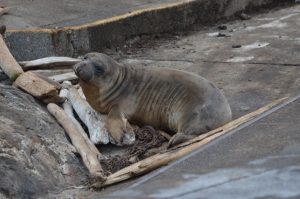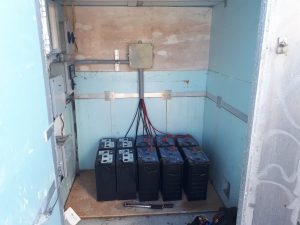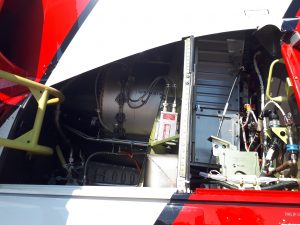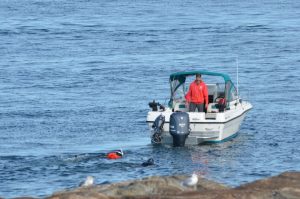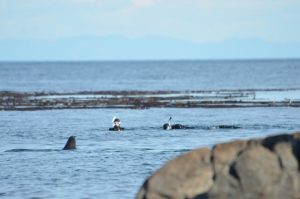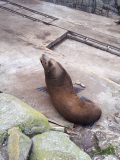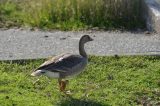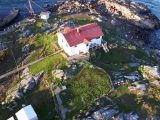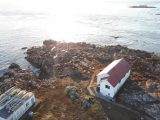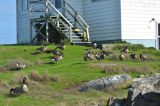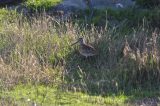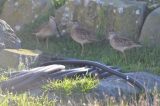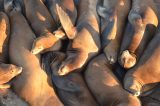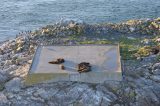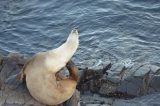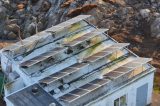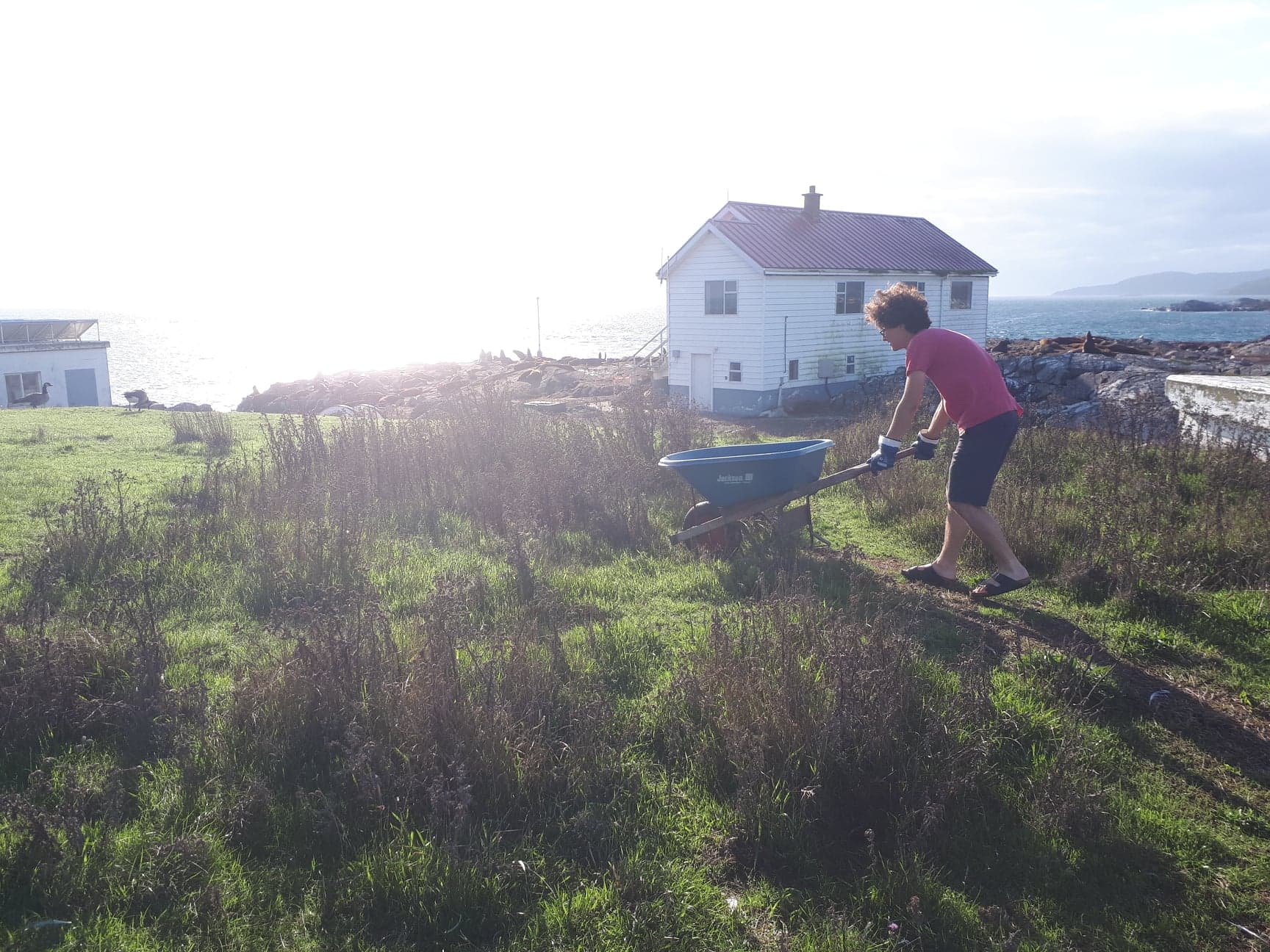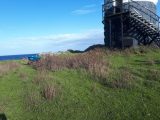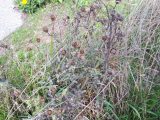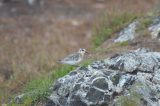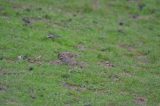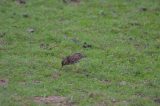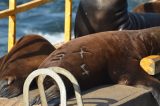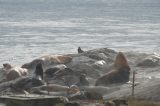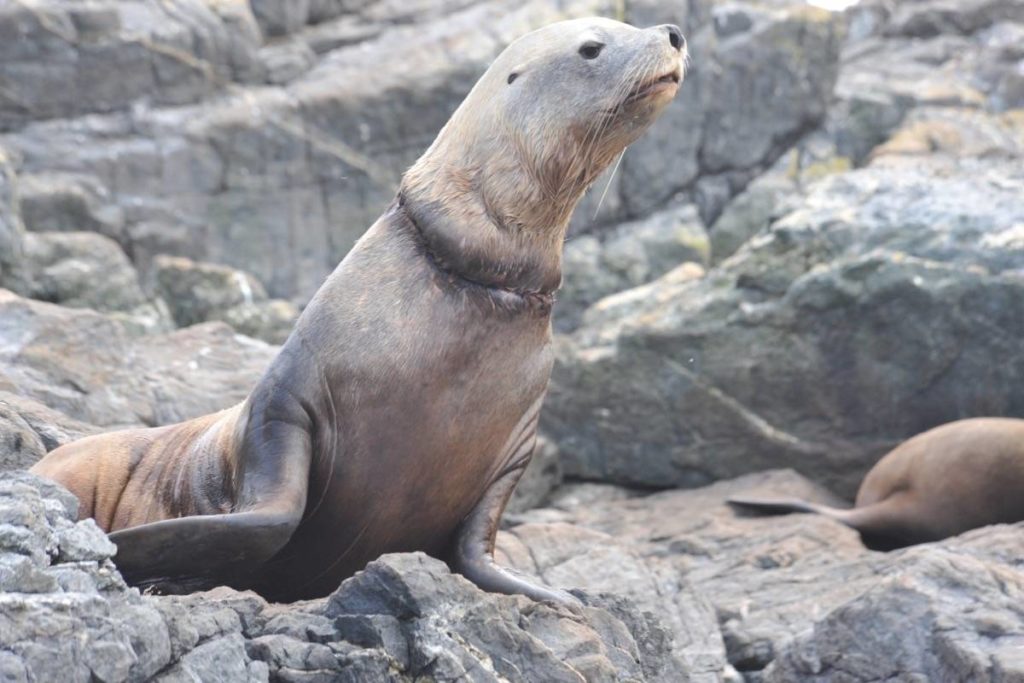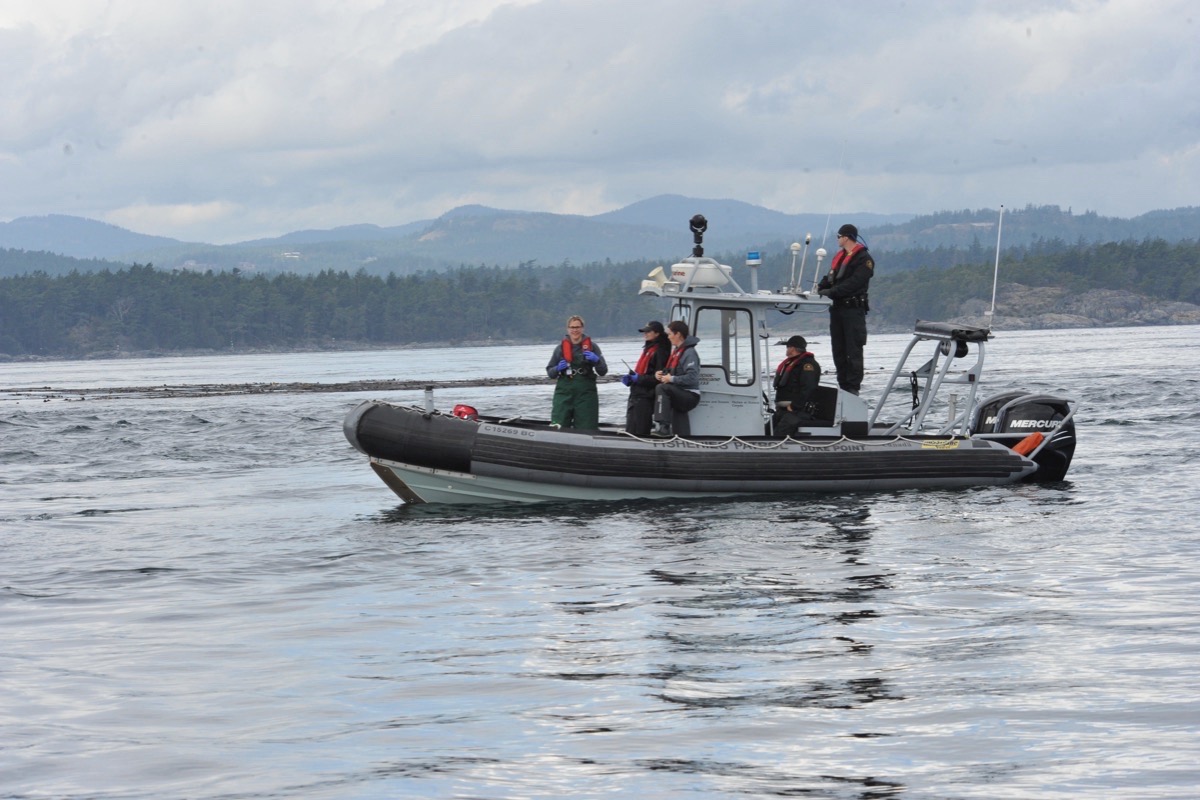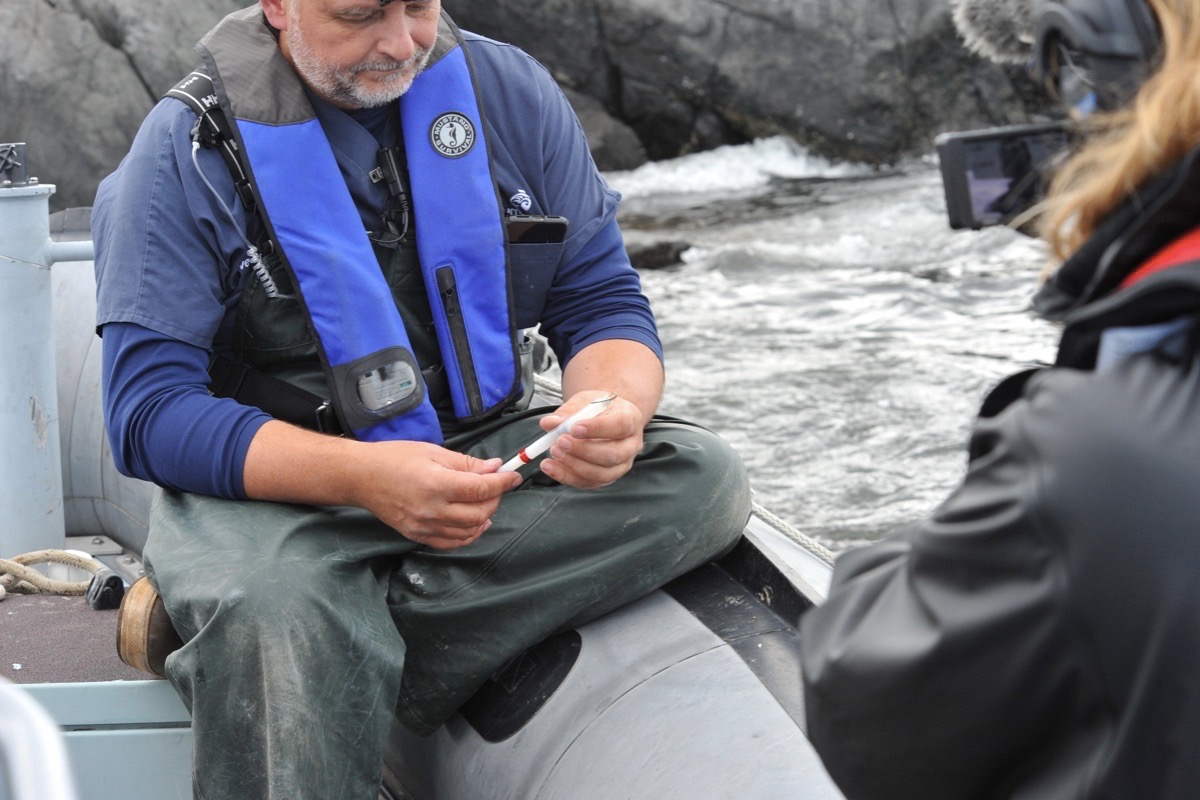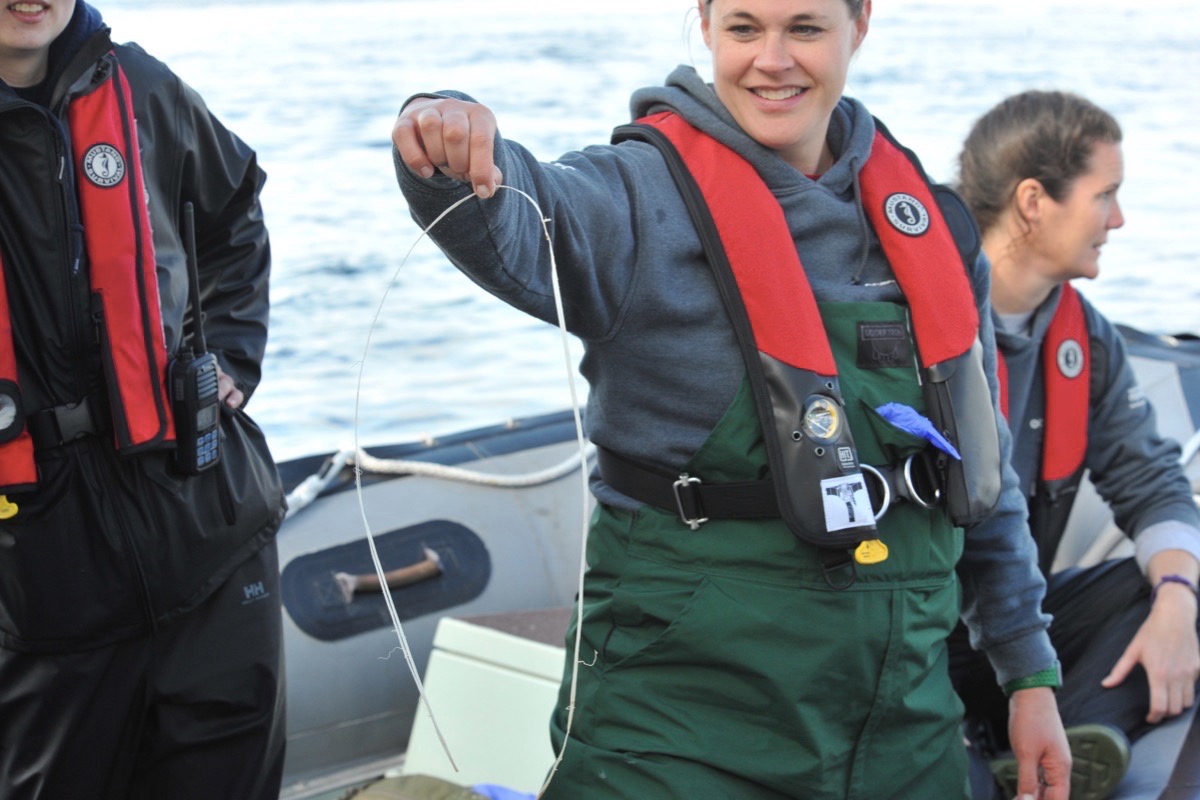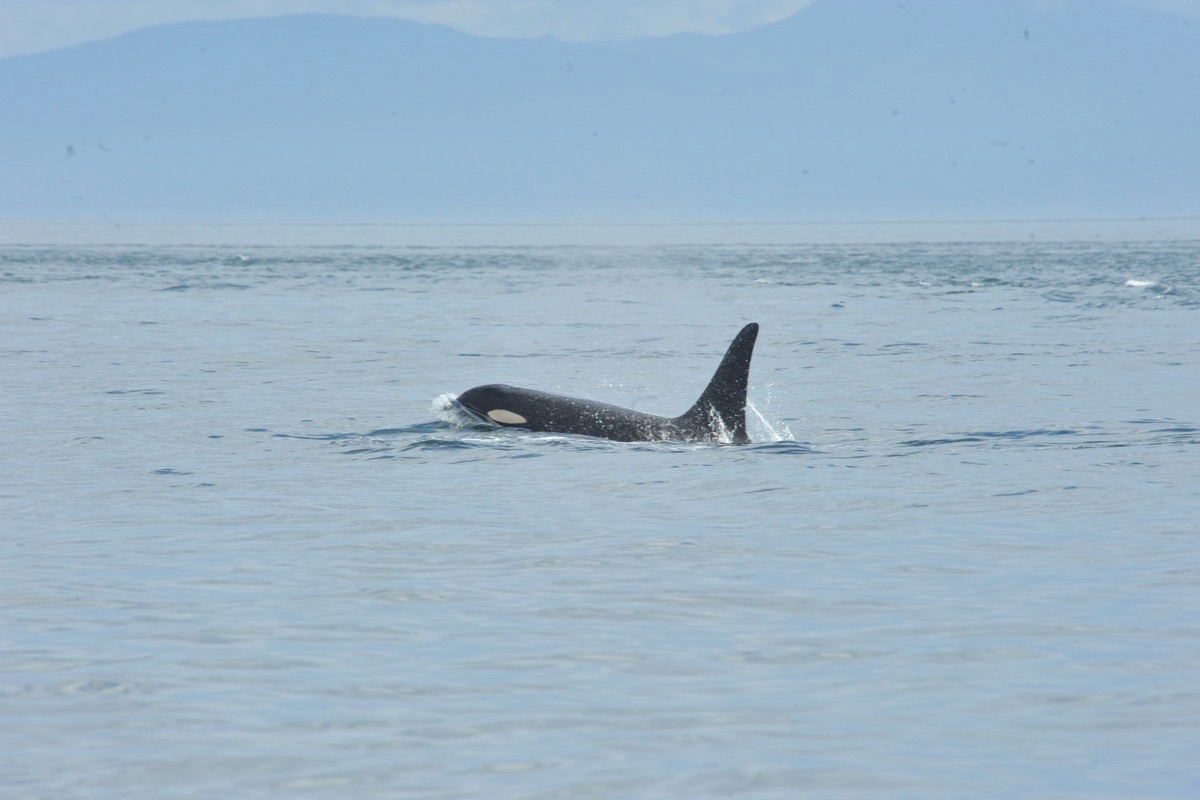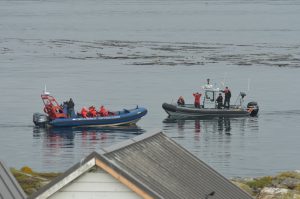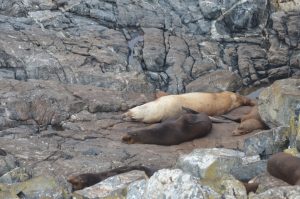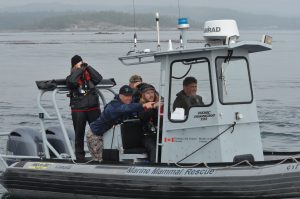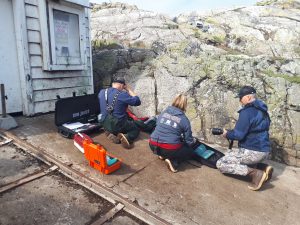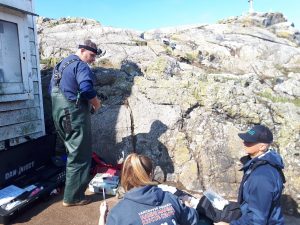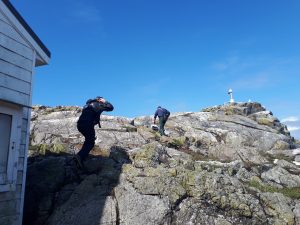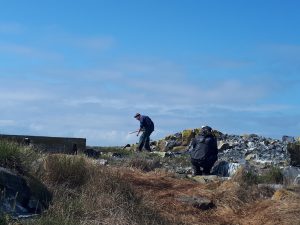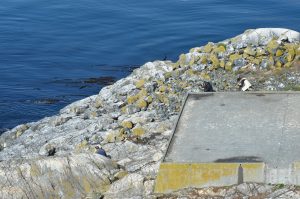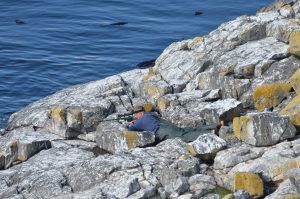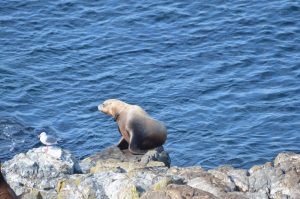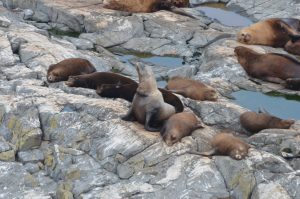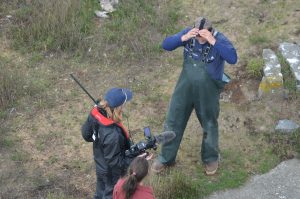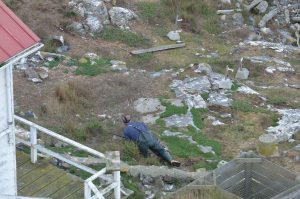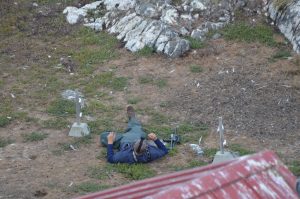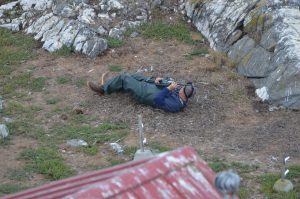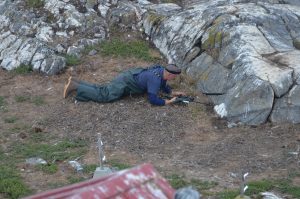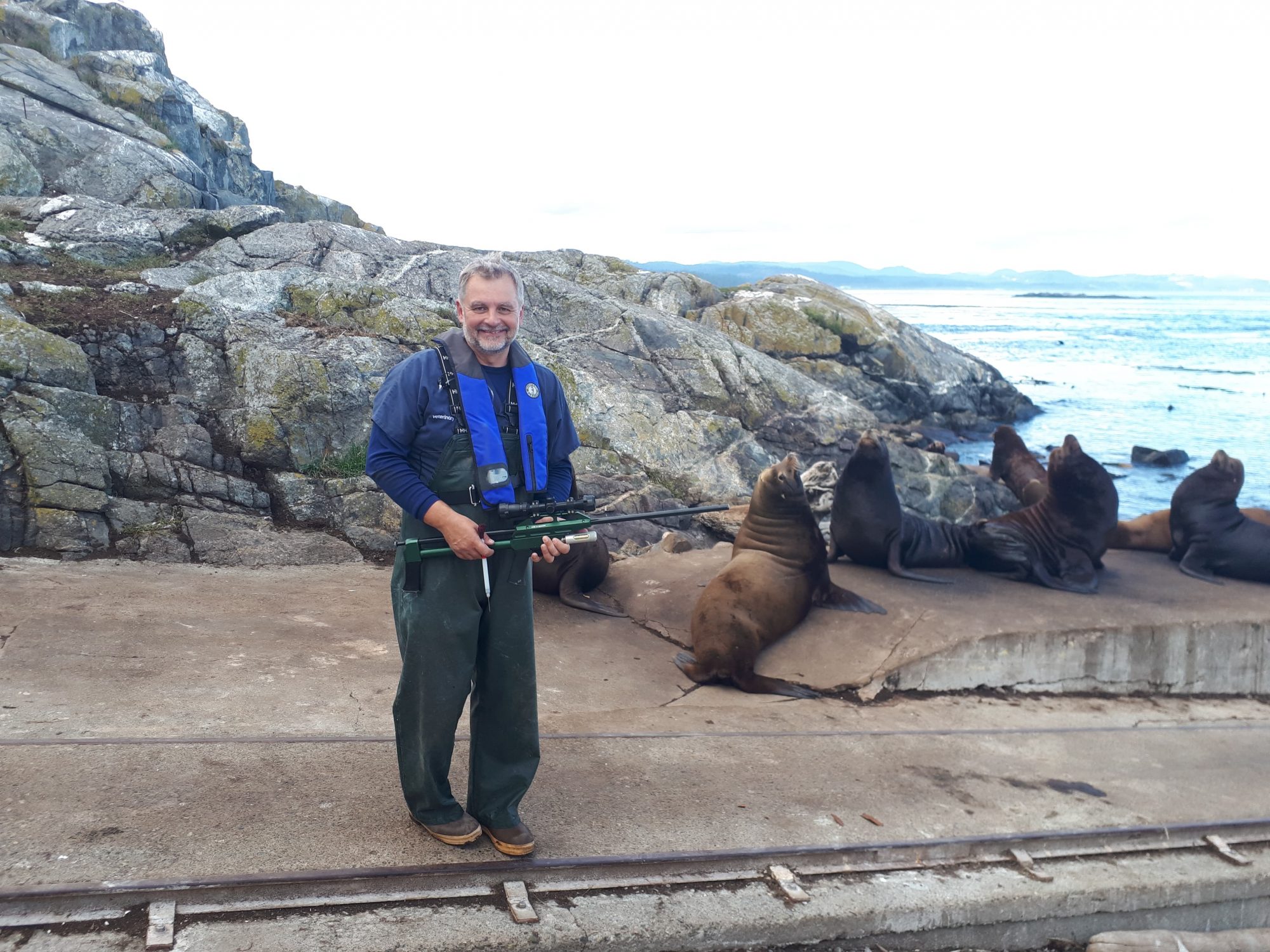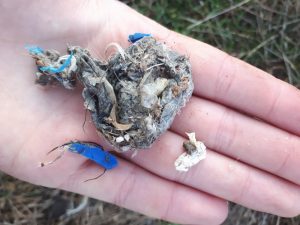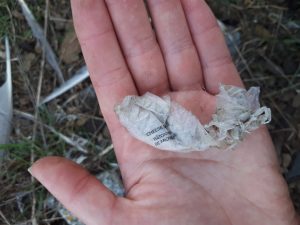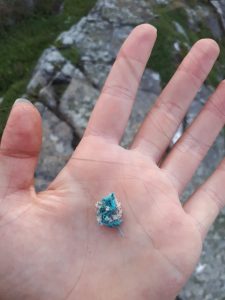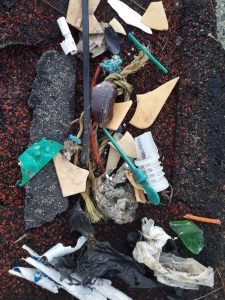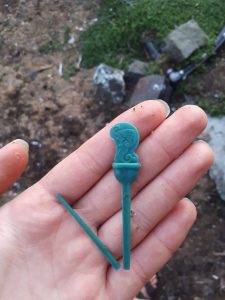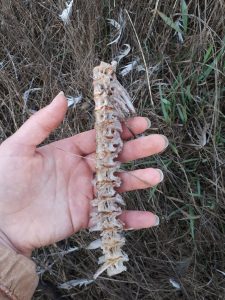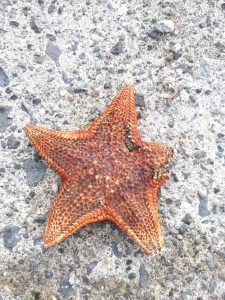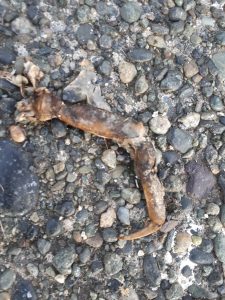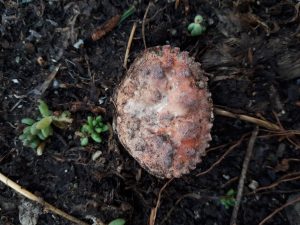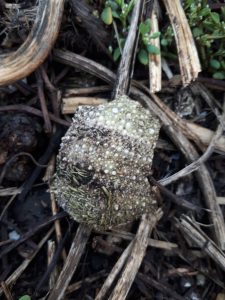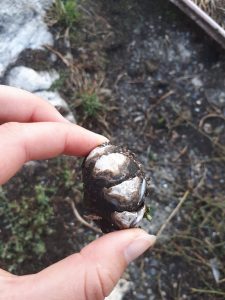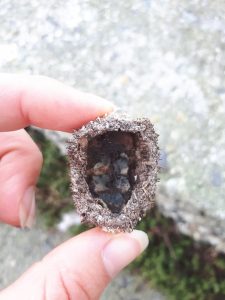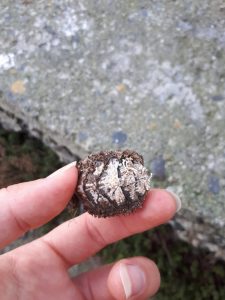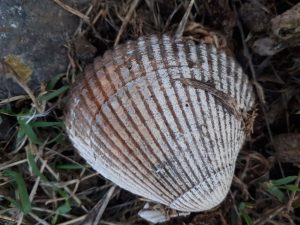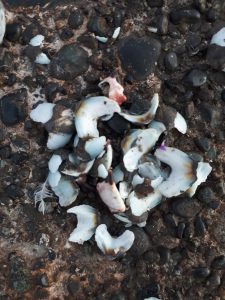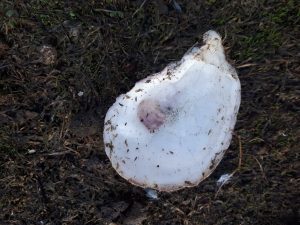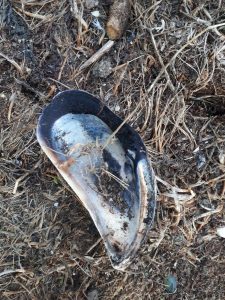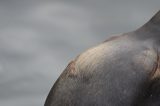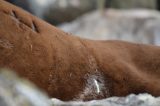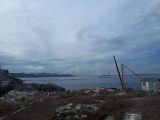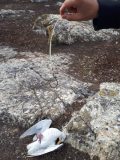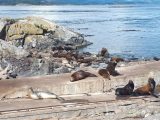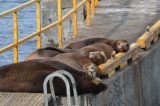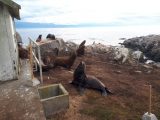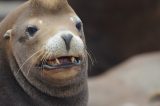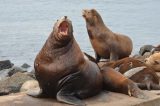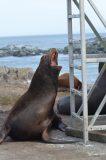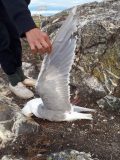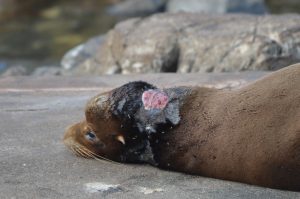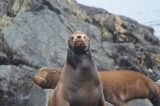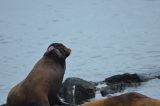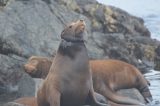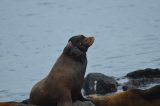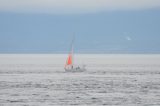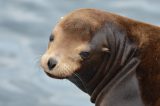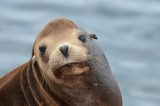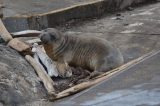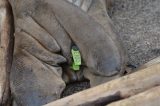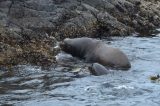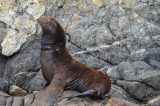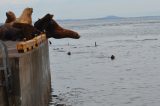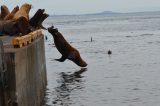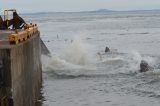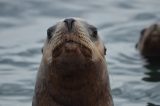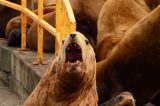We received a response from the scientists who had tagged the elephant seal mentioned and pictured in this previous post. They were able to share some interesting information about GE103, whom we nicknamed Eric. GE103 was part of a mother and pup interaction study, as well as the subject of a blubber biopsy study.
Juliette Linossier, a researcher working under a Fyssen grant at UC Santa Cruz/Año Nuevo Reserve, was able to tell us more about the early life of this animal and others. She told us that shortly after the birth of another elephant seal (GE338), there was a huge storm at Año Nuevo and GE338 was separated from it’s mother. The pup was stuck on the beach, and his mother in an protected elevated area. They called to each other for a long while, but were never able to return to each other. GE338 did survive but was nursed by another female in the colony.
The now ’empty nest’ mother of GE338 became attached to GE103! She nursed him, and stayed close to him and his mother, G9474. Thus, GE103 (or as we call him, Eric) was able to take advantage of more than one milk source as a pup; the two mothers even fought over him from time to time.
According to her bio, Juliette wants to investigate the link between allonursing and maternal cognitive abilities using new approaches. Using time-lapse photography, chemical profiles and other techniques she plans to look at variables such as maternal age, pup similarity, genetic connection, spacial proximity and more to further understand what drives allonursing in these interesting creatures. Thanks for sharing, Juliette!
GE103’s blubber biopsies were taken for the purpose of furthering the understanding of pollutants bioaccumulating in marine mammals. Read more about this subject here.
Many thanks to Patrick Robinson, director of Año Nuevo Reserve and lecturer at UC Santa Cruz, for helping us learn more about this work.
We left Race Rocks last Monday (October 30th), and hours before leaving we were surprised by the landing of a Bell 412EPI Coast Guard helicopter. They came to Race Rocks in order to replace the solar battery bank beside the foghorn (near the base of the lighthouse). We were able to get great video of them landing as well as taking off!
Unfortunately, as one can see at the left of the video the landing scared many sea lions off of the rock in a rush. Without knowing that they were coming we had no chance to gently move any vulnerable animals away from the helicopter pad. We were able to speak with someone at the college about this, and the Coast Guard will hopefully be able to better work with Race Rocks in the future to ensure the safety and comfort of the animals.
The pilot was kind enough to take a moment to show us around and allow us to take some pictures. He explained that a smaller helicopter could have been landed near the house, but the 412EPI’s cargo capacity (over 6000lbs) was needed to transport the batteries. The helicopter is powered by a Pratt & Whitney PT6T-9 turboshaft engine that makes over 2000hp (about 1500kW), and it’s made in Canada!
- Loading old batteries into the helicopter.
- Fresh batteries getting installed.
- That’s not your regular engine!
We enjoyed our time at Race Rocks (a big thanks to everyone who supported us during our term), and hope to return and continue this work protecting and observing the fragile ecosystems and the animals within. Until next time!

